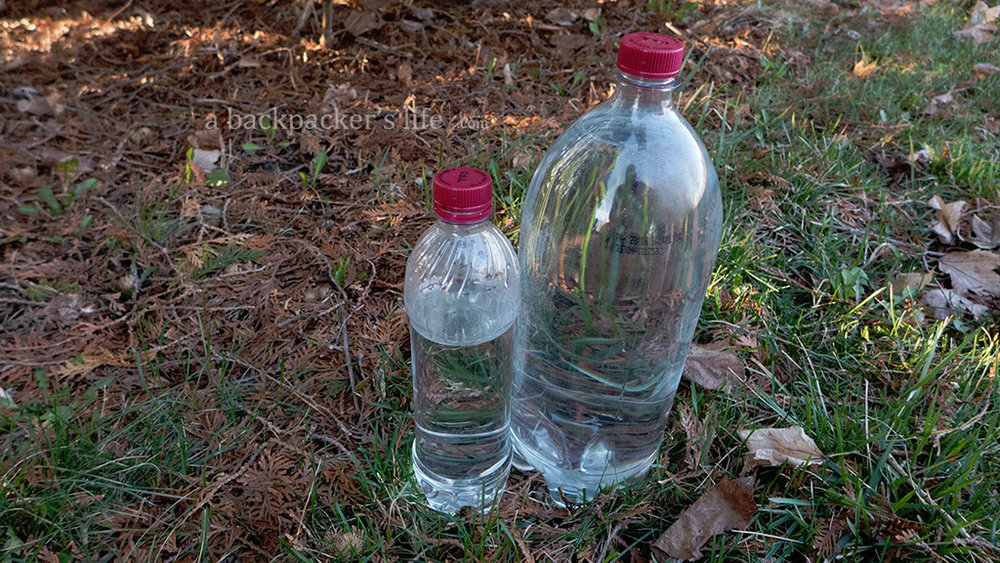They're Free and Destined for a Landfill
Rather than spend money on various water containers, I carry one or two 16 oz soda bottles and one 2 L bottle for camp. I always carry more than one bottle, so I can lose or break one and still have a way to transport water. A hiker with a dog came to my shelter on the Long Trail in Vermont, and the dog decided one of my water bottles was a fun chew toy. I'm glad I had a backup.
They're Lightweight
At under one ounce, soda bottles are lighter than Nalgene and aluminum bottles.
They're Rigid, but Squeezable
I'm not a fan of water pouches, because they're harder to fill with water from a slow moving source or lake. The rigidity of a plastic bottle won't collapse under the weight of the water.
Unlike Nalgene and other hard plastic or aluminum bottles, soda bottles can be used with squeeze filters, such as Sawyer or LifeStraw. This makes it quick and easy to fill my cook pot or to squeeze all the air out to treat the cap and threads when chemically treating the water. Also, poke a few holes in a spare cap, and you have a camp shower.
They're Better Than Hydration Bladders
Hydration bladders are difficult to get in and out of my backpack, hard to see how much water you have left, hard to clean, and not easy to attach to the outside of any of my packs.
They're Safe
One argument I've heard for using Nalgene or aluminum is that soda bottles can release dioxins in your water. This is an urban legend. There are no dioxins in plastic soda bottles. That being said, avoid heating up water inside the bottle. A group of chemicals called phthalates are sometimes added to plastics to make them flexible and less brittle. These can leach into water if you heat up the plastic. (Reference)
Another reason I've heard for not reusing plastic soda bottles, is that bacteria can develop under the cap, but these get cleaned regularly during my bleach treatment, so I'm not concerned about that. Anyway, It's just as much a problem with Nalgene bottles, Aluminum Bottles, or hydration bladders.



